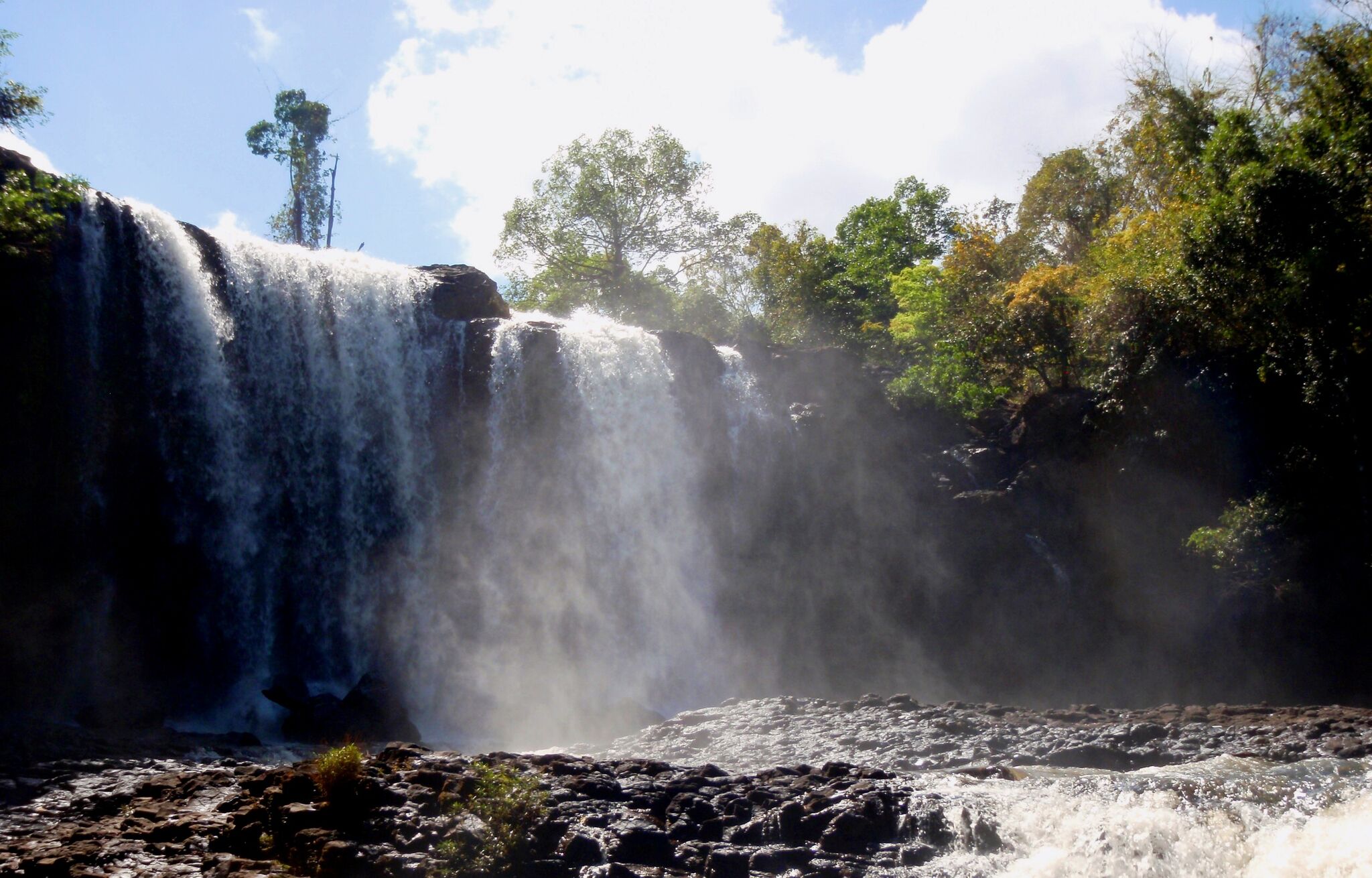
Mondulkiri
A visit to Mondulkiri is about feeling as far away from civilisation as it’s possible to be, sleeping in rainforest huts surrounded by the hoots of yellow-cheeked crested gibbons and trekking through jungle to meet rescued elephants.
While much of Cambodia is characterised by a flat scenery of rice paddies and palm trees, far-eastern Mondulkiri couldn’t be more different. This is Cambodia’s largest and least populated province, with just four people per square kilometre. It’s a landscape of thick primary rainforest, gently rolling hills and thundering waterfalls, where the local population of elephants, bears and tigers keep themselves well hidden from the encroachment of the modern world.
Of course, the region isn’t without its environmental threats. Some of its hills are now blanketed with cashew and rubber plantations instead of forest, and migration threatens to displace the indigenous Bunong people. Despite this, Mondulkiri remains a remarkably and mercifully unspoilt — thanks in no small part to the conservation and ecotourism projects that tirelessly defend its wildlife from logging, poaching and plantations.
One of our favourite projects is the Keo Seima Wildlife Sanctuary, which engages local communities in conservation efforts, and is probably the best place in Cambodia to spot animals in the wild. The Sanctuary includes the Bunong-run Jahoo Gibbon Camp, which is home to the world’s largest known populations of yellow-cheeked crested gibbons and black-shanked doucs. Another favourite is the Elephant Valley Project, where rescued and retired working elephants roam freely in the sanctuary’s spacious compound.




